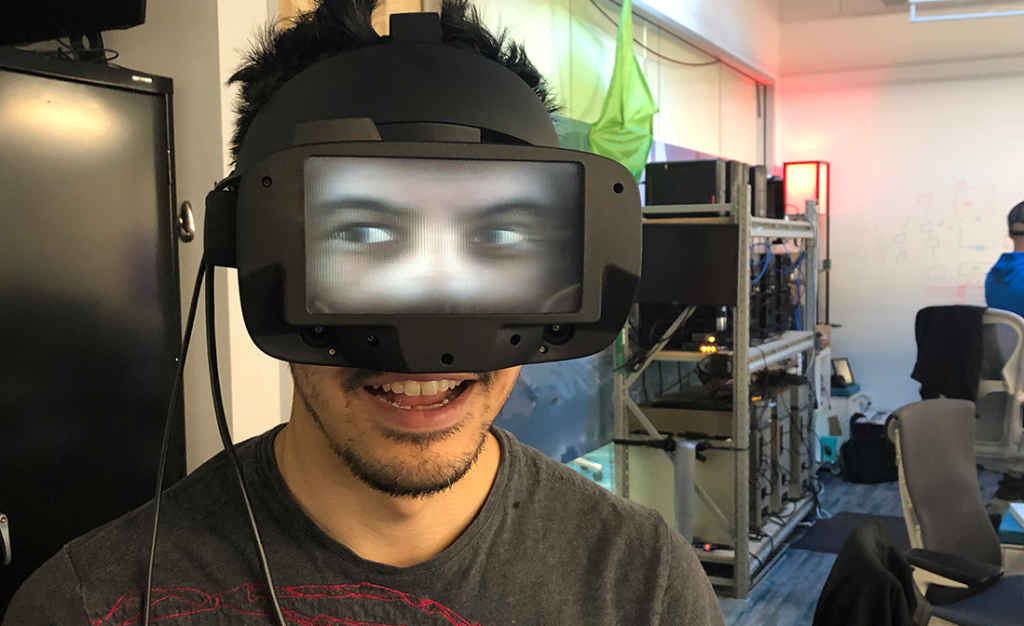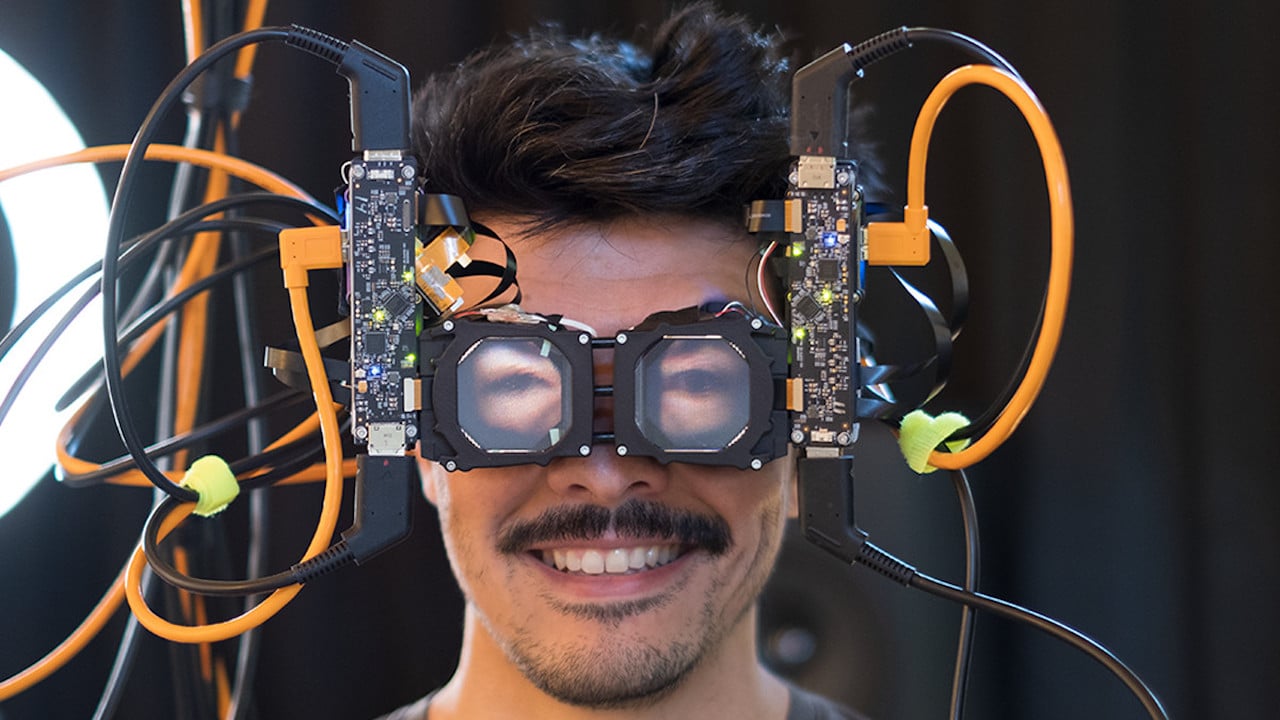Facebook Reality Labs is working to optimize the company’s viewer, making the wearer’s eyes visible, so as to make the virtual reality experience less “isolating” from the outside world. The project was presented in a document entitled “Reverse passthrough Vr“, And carefully describes the new Facebook viewer feature. Apparently, users will be able to immerse themselves in virtual reality inside the headset. Outside, however, there will be three-dimensional projection of the eyes of the wearer, thus allowing eye contact with those around him.
The Facebook viewer will show a projection of the wearer’s eyes
To date, anyone who wears a Facebook viewer can perfectly see the people around them. But the reverse is almost impossible. But the researcher FRL Nathan Matsuda has decided to change this detail. According to the company’s blog, he began work on the project in 2019, when for the first time he mounted a 3D display on the Oculus Rift S headset. On that occasion, the screen welcomed a virtual rendering of his eyes, whose movement was followed by special tracking cameras. But while the idea was interesting, manager Michael Abrash didn’t find it very practical.

So, over the years Matsuda has worked to optimize his idea of the Facebook viewer. And it did so by adding a series of lenses and cameras to a traditional augmented reality headset with a display. In this way the cameras capture an image of the face and eyes from inside the viewer, and at the same time their movement is mapped onto a digital model. Then this image is projected on an external display. In this way, the external user has the sensation of seeing the eyes of the wearer, even if in reality it is an animated copy. Indeed, if the user is completely immersed in virtual reality, the display can even return a white screen.
The result is however represented by a pair of octagonal glasses that seem to come out of a parallel world. And although similar technologies already exist in circulation, Facebook has decided to experiment with a totally innovative product. No headset allows you to see the wearer’s eyes, but the company has decided to break down the barrier that separates virtual reality and the real world. Will he really succeed?















Leave a Reply
View Comments